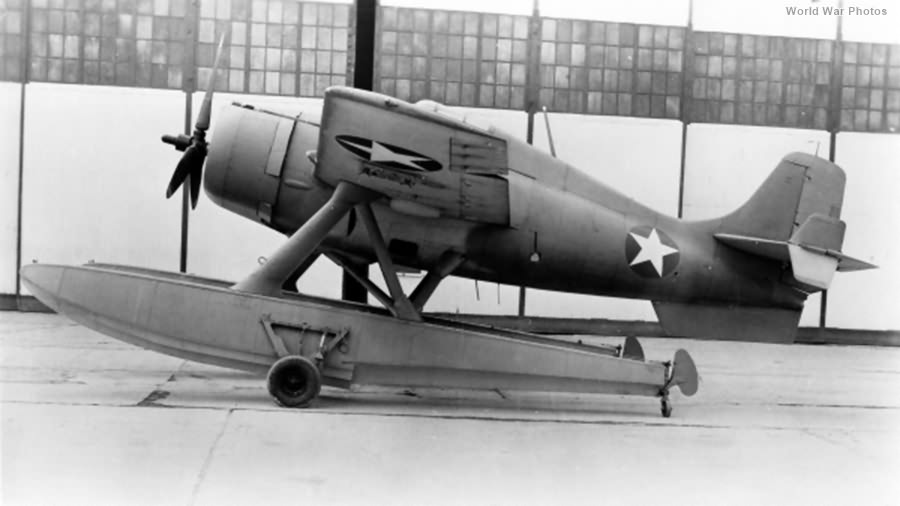In 1942, during a critical period of World War II, the United States Navy faced significant challenges as several aircraft carriers were lost in the Pacific Theater. This loss raised concerns among naval planners about the future effectiveness of the fleet and how quickly new carriers could be constructed and deployed. Additionally, there was uncertainty about the speed at which airfields could be established on newly captured islands in the Pacific, a crucial factor in maintaining air superiority.
The Japanese had already addressed a similar issue by modifying their Mitsubishi A6M Zero fighter aircraft to operate as floatplanes, known as Rufe by the Allies. These floatplane fighters, equipped with a single large central float and two smaller wing-mounted floats, provided air cover in remote and sheltered waters until land-based airfields could be built. The Rufe was encountered by U.S. forces during battles at Guadalcanal and in the Aleutian Islands, proving the concept’s effectiveness, albeit with some performance compromises.
Inspired by this Japanese innovation, the U.S. Navy decided to experiment with a similar approach. They selected a Grumman F4F-3 Wildcat, serial number 4038, and sent it to the Edo Corporation to be converted into a floatplane. This modified aircraft, designated the F4F-3S Wildcatfish, underwent a significant transformation. Instead of a single main float, the American design featured twin floats attached to the fuselage with struts. This setup led to reduced yaw stability, which was addressed by adding small auxiliary rudders to the tips of the horizontal stabilizer, working in conjunction with the aircraft’s main rudder. After initial test flights, a large fin was also installed under the aft fuselage to improve stability.
The first flight of the F4F-3S took place on February 28, 1943, with Grumman test pilot F.T. “Hank” Kurt at the controls. While the modification was technically successful, the aircraft’s performance was significantly degraded compared to the standard F4F-3 Wildcat. By this time, the United States’ production capacity had ramped up considerably, with more carriers and aircraft rolling off the production lines. Additionally, the Navy’s Seabees (construction battalions) demonstrated their remarkable ability to rapidly build airfields on newly captured islands, often making them operational while ground combat was still ongoing.
Given these factors – improved carrier availability, rapid airfield construction, and the performance drawbacks of the F4F-3S – the floatplane project was deemed unnecessary and was ultimately canceled. The focus shifted back to conventional carrier-based and land-based aircraft as the primary means of maintaining air superiority in the Pacific.
